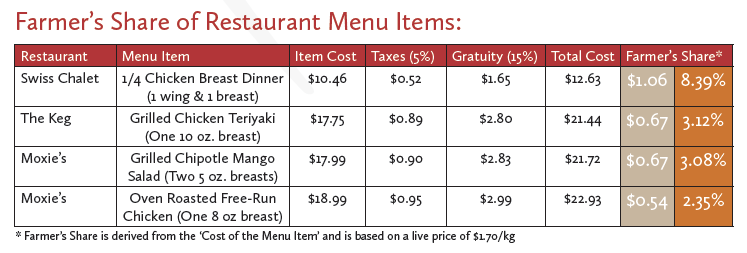We are family farms, built on family values
-
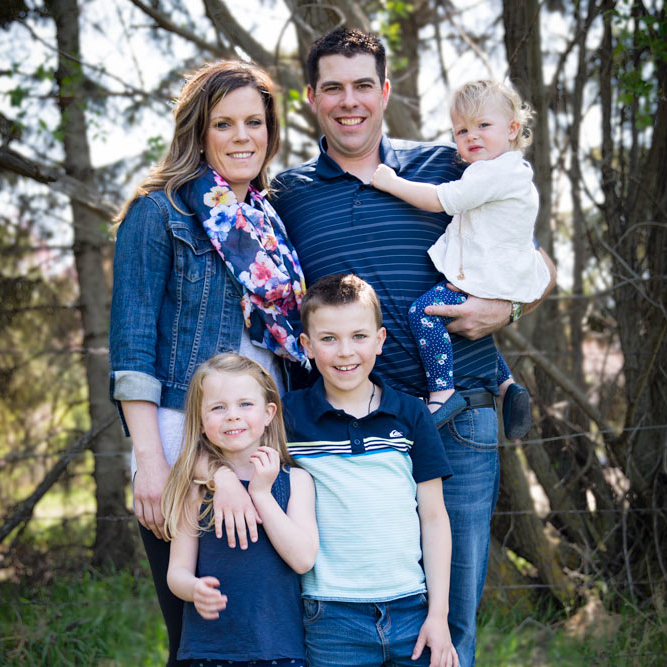
Meet Andre Poulin & Family
As a third-generation Canadian farmer, Andre Poulin obviously learned a lot as he grew up, through trying things for himself and from older members of the family.
-
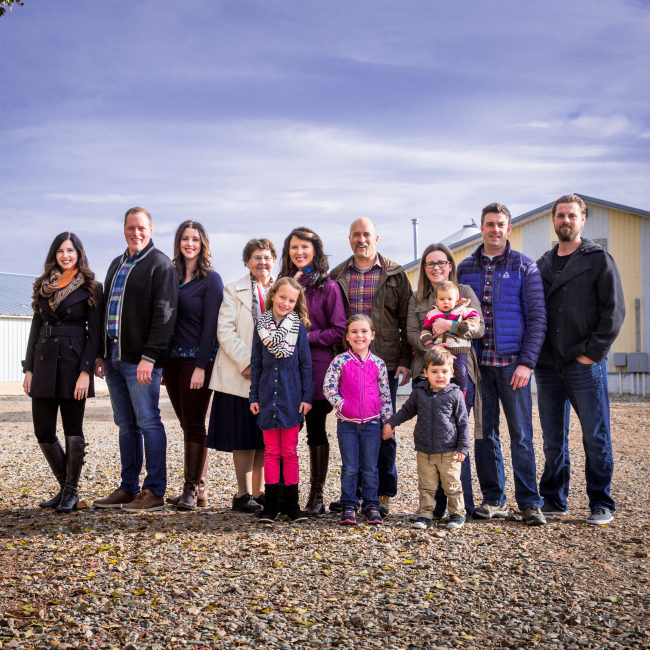
Meet Sylvia Donkersgoed & Family
Sylvia runs her own diversified farm operation, not far from her brother's, in the southern part of Alberta.
-

Meet Erna Ference & Family
"It was a great transition", says Erna Ference of the decision her and her husband Reg made more than 20 years to leave the city and begin farming.
-
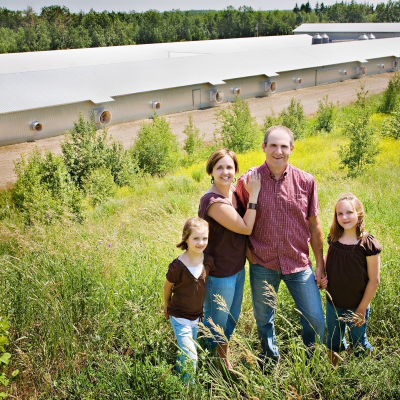
Meet Scott Wiens & Family
Scott farms near Edmonton, Alberta with his wife Susanne, and takes a great deal of pride in the quality of the birds raised by Canadian chicken farmers.
-

Meet Tara deVries & Family
It's difficult to sum up Tara deVries' involvement with the poultry industry. That said, one thing is certain - her passion for farming and for supporting agriculture is strong.
How are chickens raised in Alberta?
What does Raised by a Canadian Chicken Farmer mean?

On the Farm Food Safety
We believe that food safety begins on the farm. Chicken farmers across Canada follow an audited On Farm Food Safety Program (OFFSP). Our producers must comply with biosecurity, barn management and record-keeping requirements.
Producers undergo an annual audit by third-party professionals trained in HACCP principles and on-farm food safety and auditing techniques. Certification under the OFFSP program is a mandatory condition for a producer's license to market chicken in Alberta.
All registered chicken farmers in Alberta have been certified under the OFFSP Program since 2004.
Refer to forms area for associated fillable forms.
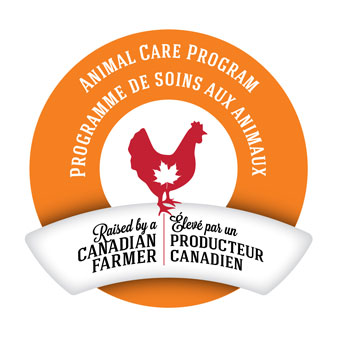
Animal Care Program
Alberta Chicken Producers is dedicated to ensuring that the stringent regulations related to the care and handling of our birds are met and followed. As part of this dedication, Alberta Chicken Producers implemented an auditable Animal Care Program to uphold the standards of the Canadian chicken industry’s on-farm animal care.
Certification under the Animal Care Program is a mandatory condition of a producer's license to market chicken in Alberta. All registered chicken farmers in Alberta have been certified under the Animal Care Program since 2012.
Refer to forms area for associated fillable forms.
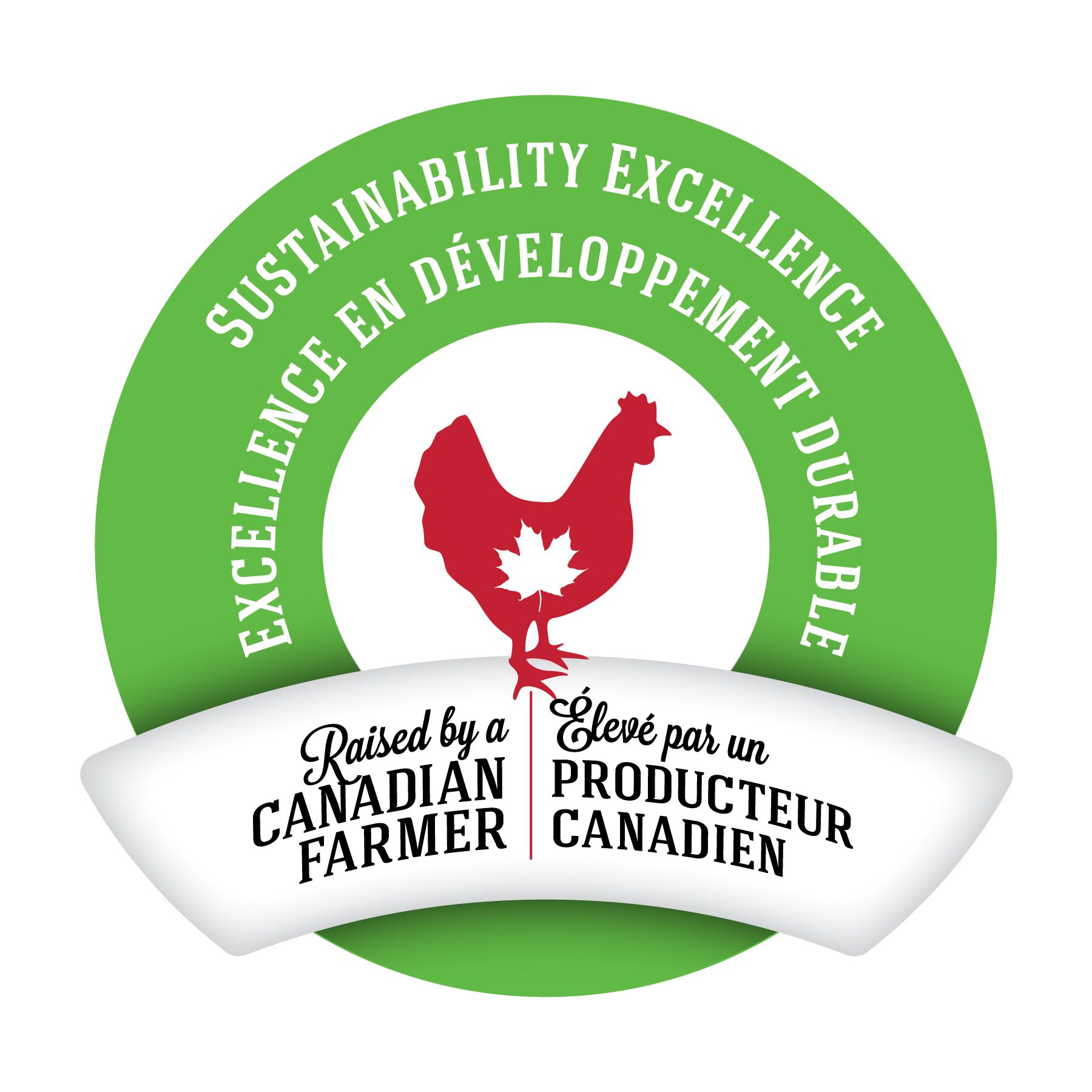
Sustainability
CFC conducted an environmental life cycle assessment (LCA) of Canadian chicken in 2017 to benchmark and assess its environmental impact. The LCA reported the environmental footprint of Canadian chicken through three main indicators: carbon footprint, water consumption and non-renewable energy use.
Per kilogram of eviscerated chicken produced in Canada, on average:
- 2.4 kg of CO2 eq. is produced
- 65 L of water is consumed
- 25 MJ of non-renewable energy is consumed
Compared to other chicken-producing regions of the world, Canadian chicken has one of the lowest carbon footprints.
Farming FAQ
Concerned about antibiotic resistance and use?
We are too. Check out this short video we’ve put together to talk about the issue and what chicken farmers are doing about it. And what you can do as well!


